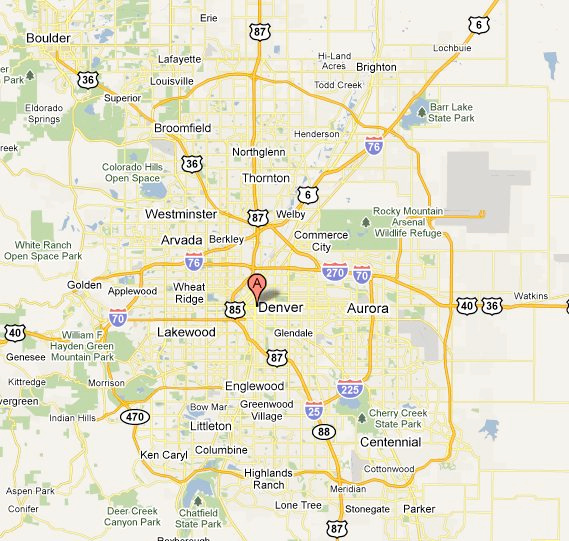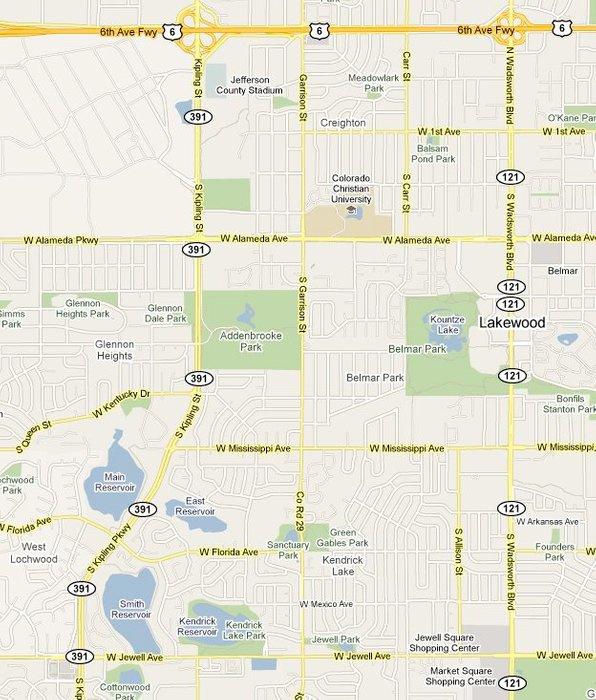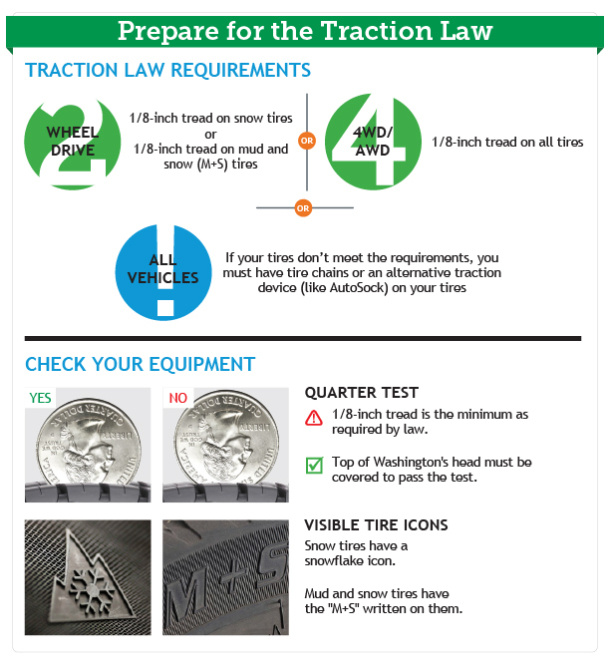Introduction
Driving in cities varies according to each cities geography, social layout, and hot spots. The traffic issues have a major impact on how a city manages its transportation issues, and that is why public transport systems don't cover the needs of the many. This is why rideshare has become so popular since it provides a personalized solution to a time old problem; how do I get from where I am to where I want to be? So here at RSF, I decided to start preparing guides for my readers, comprehensive insights into anything and everything rideshare related.
RSF City Guides for Drivers
This series will look at specific cities and focus on issues that are related to each and every city. Take into account that all information provided will change over time. Cities tend to change their transportation routes, and business, as well as social locations, move around.
Denver, Colorado
Denver is one of the fastest growing cities in the US and is the 19th most populous city as well. With a population of over 700,000, it was nominated as the best place to live in the US in 2016 by the US News and World report.
Before we go into discussing the driving spots and what to look out for, you have to know your basic geography here. The mountains you see are the Rocky Mountains, and they are in the west of the city. So now you will always know your north, just look to the mountains to see your west. (Left of North).
Since it is easy to see the mountains from anywhere in the city, you should always be able to know your location in respect of highways and other locations that tourists might ask for.
One more fact is that most of the roads in Denver are set in a grid like pattern unless you reach downtown and then they are at an angle. The reason that the city planners set the downtown streets in an angle to the gird was to place them facing northwest to southeast so that they get at least 3-4 hours of sunshine every day due to heavy snowfall and the need to melt it quickly. The only issue with heavy snowfall days is that there is no sun, but who cares; this is Denver.
Locations and Hotspots
When you hear someone say Denver, it can mean one of four things;
- The City of Denver,
- The County of Denver,
- The Denver Metro Area,
- The Denver Omelet,
The Denver metro area is made up of around 20 adjacent cities, so make sure you know your locations and understand that Denver is really more than just "Denver."

The Denver Metro Area Map
Where to drive in Denver
- Downtown: (Colorado district) This is the City of Denver, which encompasses all the big skyscrapers and sports teams.
- Lakewood: The biggest area and is on the west side of town.
- Aurora: the east side of town.
- Wheat Ridge/Arvada: A residential area of Northwest Denver.
- Littleton: The suburbs located Southwest Denver, also the Lockheed Martin MI complex.
- The Tech Center: This is made up of Englewood, Centennial, and Highlands Ranch; Straight south down I-25. This is where the traffic is during rush hours.
- Westminster: Arvada North.
- Denver International Airport. This is 40 miles northeast of downtown on the I-70 and is shaped like a swastika.
Interstate and Highways

The two main interstates that cross through Denver are the I-70 that is east to west and the I-25 which is North to South; you can't get much simpler then that. These interstates will take you across the US, so once you hit one, you just keep on driving until you end up somewhere else.
The I-76 and I-270 are north of downtown, and they both intersect with the I-25, they are not so useful for inner city driving, just highways to other places. The C-470 and I-225 are at the south of the city, and they create a circle around the city. The C-470 is usually busy, so try to avoid this route when leaving the city. Its best to take 6th avenue or Highway 6 that starts out as a one-way street and then changes into a highway. Both routes lead you to the mountains and intersect with the I-70 and C-470. Another accessible route is Highway 285 that starts in the south of the city and runs in parallel to the I-25 and I-225 all the way to the mountains.
Basic rules include always taking an alternative route. Use the I-76 I-270, or E470 (which is a toll road), try the highways 85 or Hwy 287. Beware the "Mousetrap" intersection of I-25 and I-70.
- Friday -Sunday (mornings): Avoid I-70 westbound, this is when everyone is traveling to the mountains.
- Saturday-Sunday Afternoons): Avoid I-70 eastbound, when everyone is coming back from the mountains.
High Roads
Denver is one of those cities where the GPS stands for Great Parking Service. This is because of the nature of the city and what you should now if you are a Denver driver. For instance, if you want to drive a passenger to the tech center, your Waze will say take the I-25. That is the wrong thing to do, The I-70 has an express lane that is only opened 75 days a year, the rest of the time is closed, but that's not the only reason. The I-70 is the highway of death and should be avoided at all times. Another reason is due to the layout, where most of the cities residents live in the west or south west and drive towards the northeast and east to get to work. This means that you need to find alternative routes from the I-70, 6th Ave., 285 and C-470 eastbound. The time they become free for use is around 9:30am, and the westbound becomes filled between 4:00pm to 6:30pm.
Now that you are avoiding the highroads, lets take a look at the alternative routes. The first rule of engagement is that malls, shopping centers, and downtown are always full.

You can take Wadsworth from 6th, just remember that Wadsworth is a commercial district from the 6th to the C-470, and all your soccer mums are driving to and from Garts, as well as the daily shoppers on the way to Walmart. Another, and faster option is taking Kipling street that is only a few seconds further up 6th, and you will have a clear drive. Denver is not too hard to learn; you just need to explain to your ride why you are driving the way you are and not standing in a long line of suckers bent on taking the highways.
Other Drivers
This is a universal rule; it is not just in Denver, the other driver is an idiot. Although sometimes I think that there is a higher concentration of other drivers here than anywhere else I go. The reason why he other driver principle is so important in Denver, even more so than perhaps driving in LA is due to the weather conditions. You would think that 99% of the drivers only come to Denver to drive and live somewhere in the Kalahari Desert.
The truth about Denver is that it does not have bad weather conditions, most of the year is mild. This is why we all wonder why there are angled streets when 300 days of the year the city is clear of any bad weather conditions. This leads me to conclude that all the drivers are as mild as the weather, and when it does snow, they forget the basics, such as preparing the car for winter. In fact, its usually a street full of slow drivers with fast wipers and hard brakes, which only adds to the confusion.
Winter in Denver
Now let's take a look at the those few days when Winter does hit the streets of Denver.

Remember the I-70; well try to forget it. This is the worst route to take any time of year, especially winter. Always check with the Colorado Department of Transportation's (CDOT) Winter Ready campaign.
Traction Law
When driving out of Colorado to the mountains, prepare for your safety and the safety of others. Having the right equipment for winter driving is essential. Make sure you understand Colorado's Passenger Vehicle Traction Law.
Passenger Vehicle Chain Law
The Passenger Vehicle Chain Law is put in force before a rad is closed. This means that only cars with snow chains or snow-socks can drive on the roads.
I-70 Mountain Express Lane
During the winter, the CDOT opens up the I-70 Mountain Express Lane. This is a 13-mile shoulder on eastbound I-70 that operates as a third lane during peak travel periods. When its open it reduces the time for a drive by up to 30 minutes, however, I still think its not worth the while using the I-70 to cross the city.
Snowplows
Three rules for driving around snow ploughs:
- Never overtake or pass through tandem plowing. Tandem plowing staggers multiple snowplows across an entire roadway so that it can be cleaned in one efficient sweep.
- If you tailgate, make sure there is sufficient distance between you and the snow plough. You need to keep at least 4 cars distance between you so that the ice and other hard objects don't hit your car when driving behind.
- Don't pass on the right; the snow plough is designed to push the snow and ice to the right, so you will most probably hit a wall of such stuff.
10 Tips for Driving in Denver and the Mountains
If you decide to drive for Uber or just drive for fun in Denver, take down these tips, they will make your experience a much better one.
- Driving in Colorado is a wonderful experience for those that like nature and breathtaking views. If you are an Uber driver, leave the wonderment to your passengers and concentrate on the roads.
- If you are driving downhill, yield to all vehicles coming uphill. Cars going uphill have the right of way.
- The state law is staying to the right. This is even more important when driving in the mountains. As an Uber driver, you will get a lot of mountain rides, stay to the right and drive slowly.
- There are quite a lot of semi's driving around Denver and the mountains. Trucks have a lot of momentum and inertia, let them pass you downhill, it's safer then forcing them to slow down, you will always be able to overtake them uphill.
- When driving uphill remember that you're a/c system places a lot of pressure on the engine If you can turn off the aircon, open a window instead. Since there is a lot of uphill driving when taking passengers to the mountains, remember that mountain driving is not city driving.
- Use the gears, not the brakes. When you are on a long downhill stretch, place your vehicle in a low gear, take your foot of the gas and just let your engine do the driving. Another reason for not using brakes is when the roads are snowy wet; braking tends to lock the wheels that then skid or skate on icy roads. This is also a good way to save your brake pads from overheating or wearing down.
- Denver is full of wildlife, and more so the mountains. You might think pedestrians are an issue; they are not. A deer will jump in front of your car just to test your chicken skills. So, drive slowly, if you are too fast the deer will lose out, but so will you. Also, when driving too fast, when you swerve, you end up in the emergency ward.
- For long rides out of the city, plan for stops. Take a brake and enjoy the scenery, let your passengers take some selfies.
- Weather conditions do change the higher you get. Make sure you are prepared for sudden changes in driving conditions.
- Speed limits: The fast lane means you can drive 5 mph faster than the speed limit, and the slow lane means you must drive 5 mph slower than the limit. The best lane to drive in is the middle one.
